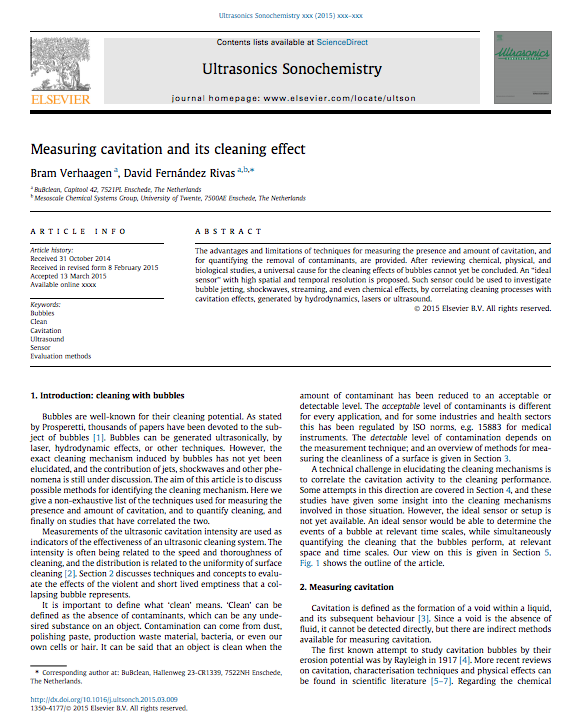The Ultrasonics Sonochemistry journal published our article in which we describe various techniques for measuring cavitation as well as for determining whether something is clean or not. We also discuss the underlying question: ‘what is “clean”?’.
In the AudioSlides below, we explain the highlights of our paper:
[iframe
marginheight=”0″
marginwidth=”0″
frameborder=”0″
style=”border: 0″
scrolling=”no”
width=”258″
height=”231″
src=”http://audioslides.elsevier.com//ViewerSmall.aspx?source=1&doi=10.1016/j.ultsonch.2015.03.009″]
The article can be requested from us or downloaded here:
‘Measuring cavitation and its cleaning effect’.
Verhaagen, B and Fernandez Rivas, D.
Ultrasonics Sonochemistry, Special Issue ‘Cleaning with bubbles’. (In press)
DOI: j.ultsonch.2015.03.009
Summary:
The advantages and limitations of techniques for measuring the presence and amount of cavitation, and for quantifying the removal of contaminants, are provided. After reviewing chemical, physical, and biological studies, a universal cause for the cleaning effects of bubbles cannot yet be concluded. An “ideal sensor” with high spatial and temporal resolution is proposed. Such sensor could be used to investigate bubble jetting, shockwaves, streaming, and even chemical effects, by correlating cleaning processes with cavitation effects, generated by hydrodynamics, lasers or ultrasound.




